The Beatles in-between recording sessions.
- Register
- Log in to Tune-In
- Wishlist (0)
-
Shopping cart
(0)
You have no items in your shopping cart.
Beatles A Day in the Life Blog posts of '1967' 'February'
UK single release: Penny Lane/Strawberry Fields Forever
A key date in The Beatles' career came with the UK release of perhaps their finest single of all, the double a-side Penny Lane/Strawberry Fields Forever. Although heralded upon its release as a major advance for the group - and, indeed, for Western music - the single failed to reach number one in the UK, the first time this had occurred since Love Me Do in 1962.
Penny Lane/Strawberry Fields Forever entered the charts on February 23, 1967, and climbed to number two. It was held off by Engelbert Humperdinck's Release Me, and spent 11 weeks on the charts.
The failure to reach the top was because many chart compilers counted the double a-side as two individual releases; it did, in fact, outsell Release Me by nearly two to one.
It was pretty bad, wasn't it, that Engelbert Humperdinck stopped Strawberry Fields Forever from getting to number one? But I don't think it was a worry. At first, we wanted to have good chart positions, but then I think we started taking it for granted. It might have been a bit of a shock being number two - but then again, there were always so many different charts that you could be number two in one chart and number one in another.(George Harrison)
Penny Lane/Strawberry Fields Forever was issued as Parlophone R 5570. Initial copies came in a picture sleeve, unusually for the time. Indeed, only two Beatles singles were issued with picture sleeves in the UK, the other being Let It Be.
It's fine if you're kept from being number one by a record like Release Me, because you're not trying to do the same kind of thing. That's a completely different scene altogether.(Paul McCartney)
George Martin later regretted not including the two songs on The Beatles' Sgt. Pepper album.
The only reason that Strawberry Fields Forever and Penny Lane didn't go onto the new album was a feeling that if we issued a single, it shouldn't go onto an album. That was a crazy idea, and I'm afraid I was partly responsible. It's nonsense these days, but in those days it was an aspect that we'd try to give the public value for money.The idea of a double A side came from me and Brian, really. Brian was desperate to recover popularity, and so we wanted to make sure that we had a marvellous seller. He came to me and said, 'I must have a really great single. What have you got?' I said, 'Well, I've got three tracks - and two of them are the best tracks they've ever made. We could put the two together and make a smashing single.' We did, and it was a smashing single - but it was also a dreadful mistake. We would have sold far more and got higher up in the charts if we had issued one of those with, say, "When I'm Sixty-Four", on the back.
Anthology
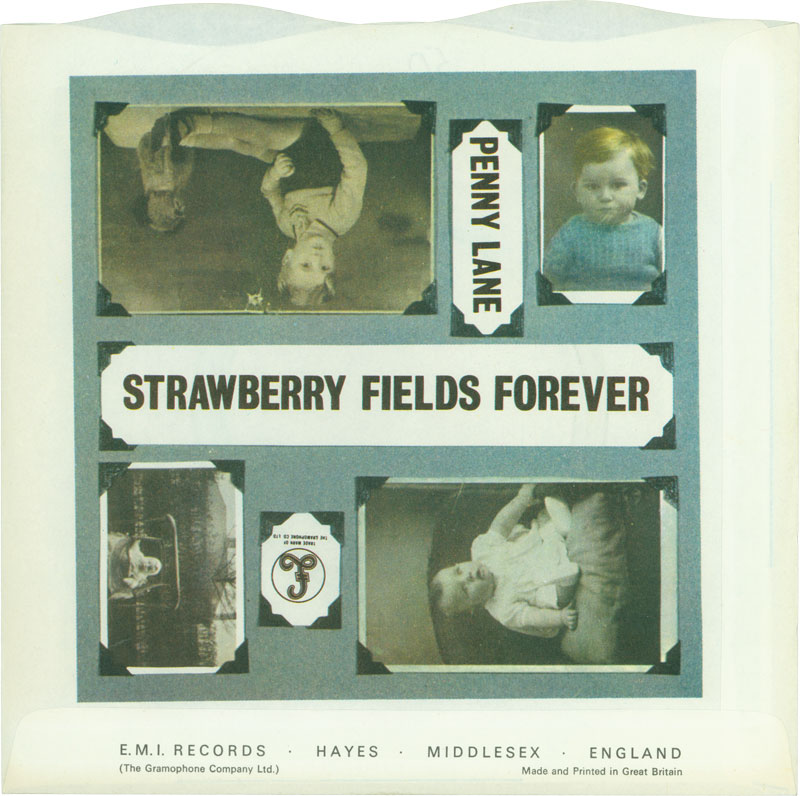
Studios Three, EMI Studios, London
A 7:00 pm - 1:45 am session which began wit the overdubbing of vocals and bass onto the best February 8th basic track recording of "Good Morning Good Morning". A rough mono mix was done before take eight was reduced into take nine and ten. Overdubs onto the latter would begin on March 13th.
The Beatles in-between recording sessions.
Studio Two, EMI Studios, London
More work on "Only A Northern Song", George overdubbing two lead vocals onto take 12, which was a reduction of take three made at the start of the 7:00 pm - 12:30 am session. Rough mono mixes were then made so that acetate discs could be cut.
Below a candid picture of Paul taken by Denise Wernek on this day.
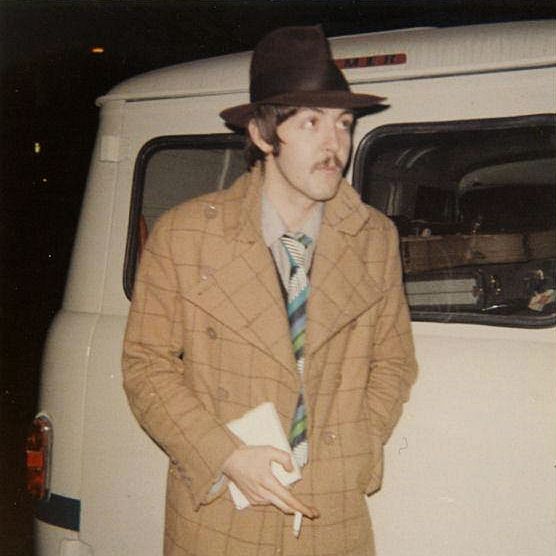
Studio Two, EMI Studios, London
This 7:00 pm to 3:30 am session began with the preparation of four new mono mixes of "A Day In The Life" and then turned to the recording of a new number. George's "Only A Northern Song". (In keeping with George's frequent shortage of song titles, it started out that night as "Not Known.") A wry comment on the fact that it would be published by Northern Songs, "Only A Northern Song" was going to be George's chief contribution to Sgt. Pepper's Lonely Hearts Club Band.
As it transpired, though, the song didn't see commercial release until January 1969, on the Yellow Submarine Soundtrack Album. This evening, the Beatles recorded nine takes of the song's rhythm track, the third marked "best".
Twickenham Film Studios, St. Margaret's,Twickenham
Its marked contrast to the films A Hard Day's Night and Help!, which had been finished and released a few short months after going into production, How I Won The War was a much slower affair. Although shot through the autumn of 1966 - John completing his role on November 6th - its world premiere did not occur until October 18, 1967 (at the London Pavilion, with all four Beatles in attendance).
During the long interlude, the film's post-production processes were undertaken, with post-sync dubbing of voices and music being done in the Recording Theatre here at Twickenham from this date through to March 3rd. John attended at least once - though a precise record of date(s) no longer exists - overdubbing his voice onto the soundtrack.
In an opportunistic, if not downright cheeky, attempt to promote the film, the United Artists record company released as a British single on October 13, 1967 - a few days before the premier, a "song" called "How I Won The War," attributed to Musketeer Gripweed and the Third Troop, Gripweed being the name of John's character. The clear inference was that this was a John Lennon single, issued without the other Beatles. In fact, it was almost without John Lennon too, for the 'song' combined the film's theme music written by Ken Thorne (who had done likewise for Help!) with a melange of effects and dialogue extracted from the soundtrack, and John was evident for less than two seconds.
Sourc: The Complete Beatles Chronical - Mark Lewisohn
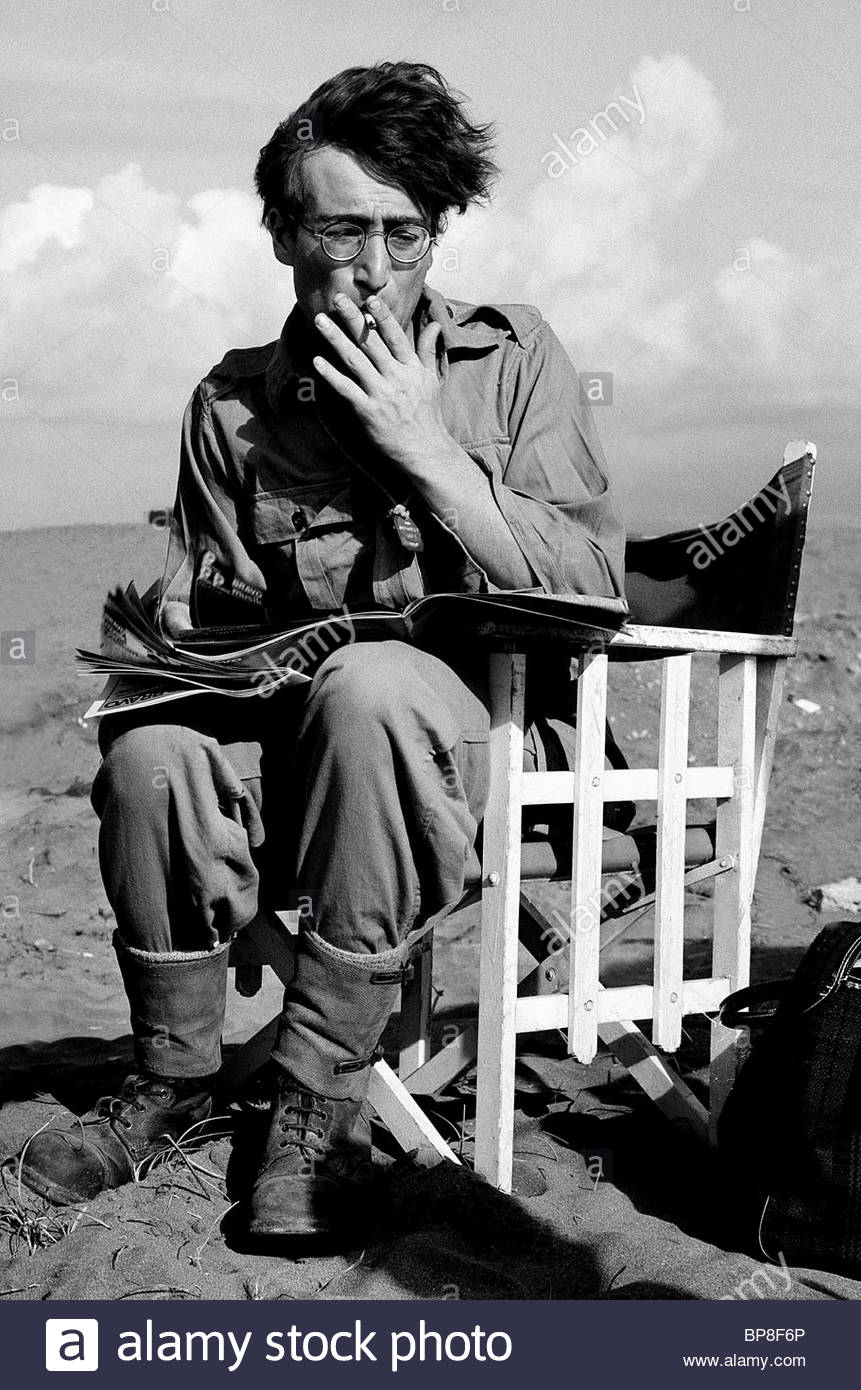
Recording: A Day In The Life
Studio One, EMI Studios, Abbey Road
Producer: George Martin
Engineer: Geoff Emerick
One of the most significant Beatles recording sessions took place on this day: the orchestral overdubs for "A Day In the Life".
Forty orchestral musicians were hired for the session, at a total cost of £367 and 10 shillings:
- Violin: Erich Gruenberg, Granville Jones, Bill Monro, Jurgen Hess, Hans Geiger, D Bradley, Lionel Bentley, David McCallum, Donald Weekes, Henry Datyner, Sidney Sax, Ernest Scott
- Viola: John Underwood, Gwynne Edwards, Bernard Davis, John Meek
- Cello: Francisco Gabarro, Dennis Vigay, Alan Dalziel, Alex Nifosi
- Double bass: Cyril MacArthur, Gordon Pearce
- Harp: John Marston
- Clarinet: Basil Tschaikov, Jack Brymer
- Oboe: Roger Lord
- Bassoon: N Fawcett, Alfred Waters
- Flute: Clifford Seville, David Sanderman
- French horn: Alan Civil, Neil Sanders
- Trumpet: David Mason, Monty Montgomery, Harold Jackson
- Trombone: Raymond Brown, Raymond Premru, T Moore
- Tuba: Michael Barnes
- Percussion: Tristan Fry
What I did there was to write, at the beginning of the twenty-four bars, the lowest possible note for each of the instruments in the orchestra. At the end of the twenty-four bars, I wrote the highest note each instrument could reach that was near a chord of E major. Then I put a squiggly line right through the twenty-four bars, with reference points to tell them roughly what note they should have reached during each bar. The musicians also had instructions to slide as gracefully as possible between one note and the next. In the case of the stringed instruments, that was a matter of sliding their fingers up the strings. With keyed instruments, like clarinet and oboe, they obviously had to move their fingers from key to key as they went up, but they were asked to 'lip' the changes as much as possible too.
I marked the music 'pianissimo' at the beginning and 'fortissimo' at the end. Everyone was to start as quietly as possible, almost inaudibly, and end in a (metaphorically) lung-bursting tumult. And in addition to this extraordinary of musical gymnastics, I told them that they were to disobey the most fundamental rule of the orchestra. They were not to listen to their neighbours.
A well-schooled orchestra plays, ideally, like one man, following the leader. I emphasised that this was exactly what they must not do. I told them 'I want everyone to be individual. It's every man for himself. Don't listen to the fellow next to you. If he's a third away from you, and you think he's going too fast, let him go. Just do your own slide up, your own way.' Needless to say, they were amazed. They had certainly never been told that before.
George Martin
All You Need Is Ears
The session was recorded onto a separate reel of tape running in parallel with The Beatles' previously-recorded instruments and vocals. This required EMI's staff to create a technical solution to allow two four-track machines to run together.
George Martin came up to me that morning and said to me 'Oh Ken, I've got a poser for you. I want to run two four-track tape machines together this evening. I know it's never been done before, can you do it?' So I went away and came up with a method whereby we fed a 50 cycle tone from the track of one machine then raised its voltage to drive the capstan motor of the second, thus running the two in sync. Like all these things, the ideas either work first time or not at all. This one worked first time. At the session we ran the Beatles' rhythm track on one machine, put an orchestral track on the second machine, ran it back did it again, and again, and again until we had four orchestra recordings. The only problem arose sometime later when George and I were doing a mix with two different machines. One of them was sluggish in starting up and we couldn't get the damn things into sync. George got quite annoyed with me actually.
Ken Townsend, technical engineer
The Complete Beatles Recording Sessions, Mark Lewisohn
Having a separate tape reel running allowed for the orchestra to be recorded four times. It was then taped a fifth time, onto track four of the first reel, giving the equivalent of 200 session musicians. Paul McCartney conducted the proceedings in EMI's enormous Studio One.
We all felt a sense of occasion, since it was the largest orchestra we ever used on a Beatles recording. So I wasn't all that surprised when Paul rang up and said, 'Look, do you mind coming in evening dress?'
'Why? What's the idea?''We thought we'd have fun. We've never had a big orchestra before, so we thought we'd have fun on the night. So will you come in evening dress? And I'd like all the orchestra to come in evening dress, too.''Well, that may cost a bit extra, but we'll do it,' I said. 'What are you going to wear?''Oh, our usual freak-outs' - by which he meant their gaudy hippie clothes, floral coats and all.
George Martin
All You Need Is Ears
At the end of one of the performances - likely to have been the first - the musicians broke out into spontaneous applause.
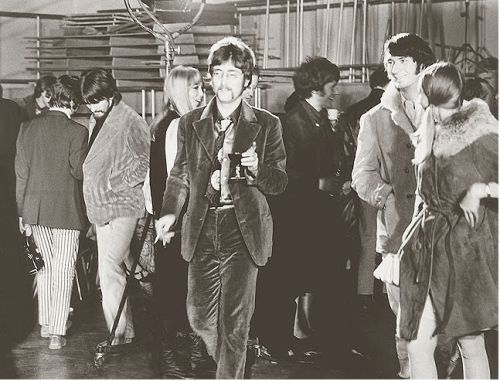
Regent Sound Studios, Tottenham Court Rd. London
The Beatles' first EMI session at a British studio other than Abbey Road. Regent Sound was one of the few independently owned facilities in London at this time.
No longer a member of EMI staff, George Martin was free to travel with the Beatles, but balance engineer Geoff Emerick and the usual crew of Abbey Road tape ops were all EMI employees so they couldn't go along. Adrian Ibbetson, chief engineer at Regent Sound, filled Emerick's role for this session, in which three takes of Paul's new song "Fixing A Hole" were recorded, the second being "best". (Start and finish times for the session weren't noted down).
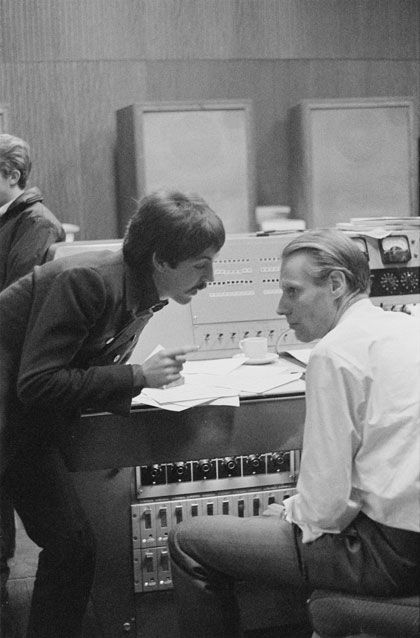
- 1962
- 1963
- 1964
- 1965
- 1966
- 1967
- 1968
- 1969
- 1970
